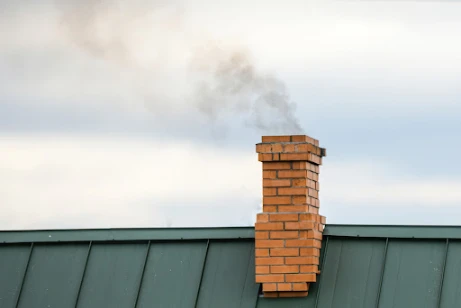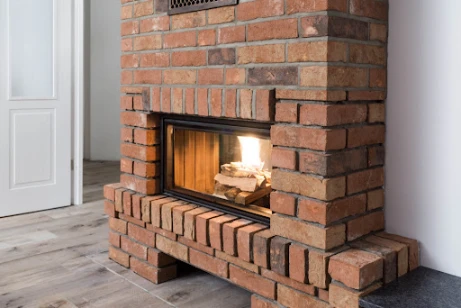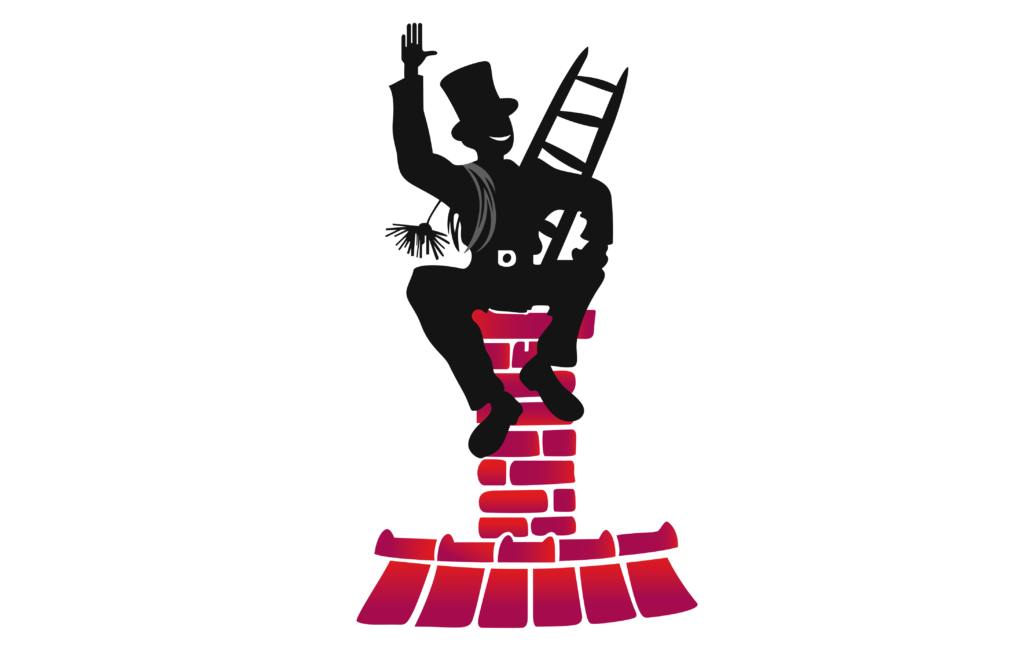How Do I Know If My Chimney Needs Cleaning?

Maintaining a clean and well-functioning chimney is crucial for the safety and efficiency of your home. Regular chimney cleaning is an essential part of home maintenance that should not be overlooked. In this article, we will explore the importance of chimney cleaning and discuss the signs that indicate when your chimney needs cleaning.
Why Chimney Cleaning is Essential
A dirty chimney can pose serious risks to your home and family. Neglecting chimney maintenance can lead to a multitude of potential hazards that should not be overlooked. Here are some critical risks associated with an unattended chimney:
Chimney Fires: The accumulation of creosote, a highly flammable substance resulting from the combustion of wood, can serve as a dangerous catalyst for chimney fires. Once ignited, these fires can rapidly engulf various sections of your residence, causing extensive and devastating damage to your property.
Carbon Monoxide Poisoning: A chimney that is blocked or experiencing malfunctions can pave the way for the insidious buildup of carbon monoxide within your living space. This silent and invisible gas is exceptionally hazardous, as it possesses extreme toxicity and can be life-threatening when inhaled in significant quantities.
By prioritizing regular chimney cleaning, you can effectively minimize these perils and establish a secure environment for the operation of your fireplace or heating system. It is crucial to prioritize the safety of your household and the preservation of your home by ensuring that your chimney remains free from hazards that may compromise their well-being.
How Do I Know If My Chimney Needs Cleaning? | Signs to Look Out for
Over time, chimneys can accumulate a variety of substances such as creosote, debris, and obstructions that can hinder their performance and even pose a fire hazard. Recognizing the signs that indicate your chimney needs cleaning is essential for proactive maintenance. By addressing these signs promptly, you can maintain optimal chimney efficiency and reduce the risk of potential hazards. Let’s explore some common indicators that suggest it’s time to clean your chimney.
Decreased Draft Efficiency
One of the primary signs that your chimney requires cleaning is a noticeable decrease in draft efficiency. When you light a fire or use your fireplace, a weak or insufficient draft can indicate the presence of a dirty chimney. The accumulation of creosote, debris, or obstructions within the chimney can restrict the airflow, preventing the proper release of smoke. As a result, you may experience poor draft efficiency, with smoke lingering in the fireplace or room rather than being effectively vented outside.
Foul Odors
If unpleasant odors permeate your home and originate from your chimney, it is a clear indication that cleaning is necessary. These odors can manifest as musty, smoky, or even strong, pungent smells. Accumulated debris and creosote in the chimney can release these foul odors when the fireplace is in use. Detecting such smells should prompt you to take action and schedule a chimney cleaning to eliminate the source of the odors.
Excessive Smoke
Experiencing excessive smoke or backdrafts while using your fireplace can signal a blockage or buildup in the chimney. If you notice an unexpected increase in smoke filling the room, or observe smoke coming out of the chimney at unusual times, it’s crucial to have your chimney inspected and cleaned. These symptoms indicate that smoke is not being properly vented, which can be dangerous and compromise air quality in your home.

Soot Buildup
Another noticeable sign that your chimney requires attention is the presence of excessive soot on the walls of the chimney. Soot is a byproduct of burning wood or fossil fuels, and its accumulation can obstruct the chimney’s proper functioning. As soot builds up, it narrows the chimney, reducing airflow and increasing the risk of chimney fires. If you observe a significant buildup of soot, it’s essential to schedule a thorough chimney cleaning to remove the obstruction and restore optimal functionality.
Chimney Fires
Experiencing a chimney fire in the past or finding charred debris in your fireplace serves as a clear indication that your chimney needs immediate attention. Chimney fires can cause severe damage to the chimney structure, leading to potential safety hazards for your home. If you have experienced a chimney fire or suspect its occurrence, it’s crucial to address the issue promptly by having a professional chimney sweep inspect and clean your chimney thoroughly.
How Often Should You Clean Your Chimney?
Maintaining a clean chimney is crucial for the safe and efficient operation of your fireplace or wood-burning appliance. The frequency at which you should clean your chimney depends on various factors, taking into account your usage patterns and the type of fuel you burn. While a general rule of thumb is to have your chimney professionally cleaned once a year, there are certain circumstances that may warrant more frequent cleanings.
If you use your fireplace regularly throughout the year, it is recommended to have your chimney cleaned annually. This regular usage can lead to the accumulation of soot and creosote within the chimney, which should be removed to prevent potential hazards.

Wood-burning stoves and furnaces, in particular, tend to produce higher amounts of creosote compared to fireplaces. Therefore, if you rely on these wood-burning appliances, it is advisable to have your chimney cleaned more frequently, possibly every six months. Regular cleanings will help mitigate the increased creosote buildup and maintain optimal performance.
In cases where you notice a significant amount of creosote buildup during inspections, it is crucial to address the issue promptly by cleaning the chimney. Excessive creosote accumulation can pose a serious fire hazard, increasing the risk of chimney fires. By taking immediate action and having your chimney cleaned in these situations, you ensure the safety of your home and family.
Even if you only use your chimney infrequently, it is still important to have it inspected and cleaned periodically. Factors such as weather conditions and animal nesting can contribute to chimney blockages, obstructing the proper flow of smoke and gases. By scheduling regular inspections and cleanings, you can detect and address any blockages or other issues before they escalate into more significant problems.
In summary, the recommended frequency for chimney cleaning is at least once a year. However, specific circumstances such as regular fireplace use, wood-burning appliances, high creosote buildup, and irregular usage may necessitate more frequent cleanings. By adhering to these guidelines and seeking professional chimney cleaning services, you can ensure the safety, efficiency, and longevity of your chimney system.
How Do I Know If I Need My Chimney Cleaned?
Determining if your chimney needs cleaning is crucial for home maintenance and safety. Signs indicating the need for cleaning include the presence of soot and creosote buildup on the chimney walls, foul odors from the fireplace or chimney, smoke backing up into the home, burning issues such as difficulty starting fires or reduced brightness, the presence of critters or nesting materials, and visible debris or blockages. Conducting regular visual inspections and consulting a professional chimney sweep can help determine the appropriate cleaning schedule based on factors like fuel type and usage frequency.
Hiring a Professional Chimney Sweep
When it comes to maintaining your chimney, hiring a professional chimney sweep from Duct Pro Cleaning services goes beyond just cleaning. Here are some key advantages you can expect when you choose our expert team:
Expertise and Experience: Our professional chimney sweeps are highly trained and experienced in chimney cleaning and inspection. They possess the necessary knowledge to identify potential issues and address them effectively, ensuring the optimal functioning of your chimney system.
Thorough Cleaning: With access to state-of-the-art tools and equipment, our professionals perform a comprehensive cleaning that goes beyond removing visible debris. They tackle hard-to-reach creosote buildup and stubborn obstructions, leaving your chimney spotless and improving its efficiency.

Safety Measures: Your safety is our top priority. Our chimney sweeps are well-versed in the latest safety protocols and guidelines. By entrusting the cleaning process to our experts, you can rest assured that the job will be conducted with utmost care and without any risks or hazards.
Inspection and Maintenance: In addition to thorough cleaning, our chimney sweeps offer detailed inspections of your chimney. By examining every component, they can identify any structural issues, damaged parts, or potential safety concerns. Our team will provide you with a comprehensive assessment and recommend any necessary maintenance or repairs.
Peace of Mind: When you hire a professional chimney sweep from Duct Pro Cleaning services, you gain peace of mind knowing that your chimney is in the hands of dedicated experts. We take pride in our commitment to delivering exceptional service and promptly addressing any potential issues, ensuring the long-term integrity of your chimney system.
Ensure the longevity and optimal performance of your chimney by scheduling a professional chimney sweep with Duct Pro Cleaning today. Contact us now to book your appointment and experience the difference our expertise can make.
DIY Chimney Inspection
Performing regular inspections of your chimney is essential for maintaining its safety and efficiency. While it’s always recommended to hire a professional chimney sweep for a thorough inspection, you can also conduct a preliminary DIY inspection to identify any visible issues. Here are a few step-by-step instructions on how to perform a DIY chimney inspection:
Safety First: Before you begin, ensure your safety by wearing protective gear such as gloves, safety goggles, and a dust mask. Make sure you have a sturdy ladder and someone nearby to assist you if needed. Safety should always be the top priority when performing any maintenance or inspection tasks.
Exterior Inspection: Start by thoroughly examining the exterior of your chimney. Look for signs of damage or deterioration. Check for loose bricks, cracks in the mortar, or any gaps that may have developed over time. Take your time to carefully inspect the entire exterior surface of the chimney. Pay close attention to the chimney cap or crown, which should be intact and free of cracks to prevent water infiltration.
Flashing Inspection: Inspect the flashing, which is the metal strip that seals the joint between the chimney and the roof. Ensure that it is tightly secured and in good condition. Look for any signs of rust, corrosion, or gaps that may allow water to seep into your home. Carefully examine the flashing from all angles and make sure it is providing a watertight seal.
Chimney Structure: Examine the overall structure of the chimney. Look for any leaning or tilting, as it could indicate a structural problem. Check for loose or missing bricks, especially around the top of the chimney where it is more prone to damage. Take note of any signs of moisture, such as water stains, which could suggest a chimney leak. Thoroughly inspect the entire chimney structure, paying attention to any areas that seem weakened or compromised.
Chimney Cap and Spark Arrestor: Inspect the chimney cap and spark arrestor, which are crucial for keeping debris, animals, and sparks from entering the chimney. Ensure that the cap is securely in place and not damaged. Check the spark arrestor for any buildup of creosote or other obstructions that may restrict airflow. Carefully examine the condition of these components to ensure they are functioning properly.
Interior Inspection: Carefully climb onto the roof or use a chimney inspection camera to examine the interior of the chimney. Look for signs of creosote buildup, a black, tar-like substance that can accumulate and pose a fire hazard. Check for any obstructions, such as bird nests or debris, which can obstruct proper ventilation. Take your time to thoroughly inspect the interior of the chimney, using appropriate tools or equipment as needed.
Check Damper Operation: Open and close the damper to ensure it moves freely. Make sure it can be securely closed when the fireplace is not in use to prevent drafts and heat loss. Test the damper’s functionality multiple times to ensure smooth operation and a tight seal.
Document Findings: Take detailed notes or pictures of any issues or areas that require attention during the inspection. This documentation will be useful if you decide to hire a professional chimney sweep for further examination or repairs. Include specific details about the condition of various components, any signs of damage, or potential hazards that need to be addressed.
Clean Up: Once the inspection is complete, remove any debris or fallen bricks from the surrounding area and dispose of them properly. Clean the area around the chimney to maintain a safe and tidy environment. Pay attention to any loose materials or hazards that need to be addressed before concluding the inspection.
Remember, if you encounter any issues that are beyond your expertise or require professional attention, it’s important to contact a qualified chimney professional to assess and address the problems appropriately.
Conclusion
Regular chimney cleaning is vital to maintain a safe and efficient fireplace or heating system. By paying attention to the signs that indicate your chimney needs cleaning and adhering to recommended cleaning frequencies, you can prevent potential hazards and enjoy the warmth of your home with peace of mind. Remember, professional chimney sweeps are the experts in this field, so it’s advisable to schedule regular cleanings and inspections with them. Stay proactive in maintaining your chimney, and prioritize the safety of your home and loved ones.

